 In rural southern New Jersey, where I mostly grew up, apple orchards surrounded us with miles of fruitfulness and roadside stands. I so clearly remember the smell of Winesap, Macintosh and Delicious, and the cool mustiness of the cider place where we would go to get gallons of dark juice and apples by the bushel. The cider place has now closed for good and stands sadly derelict, a reminder of time’s brutal speed. But several orchards and their colourful roadside displays persist, and there are newer varieties of apple now. My folks and I sampled several in the car on my last visit, like English roadside picnickers: Honeycrisp won.
In rural southern New Jersey, where I mostly grew up, apple orchards surrounded us with miles of fruitfulness and roadside stands. I so clearly remember the smell of Winesap, Macintosh and Delicious, and the cool mustiness of the cider place where we would go to get gallons of dark juice and apples by the bushel. The cider place has now closed for good and stands sadly derelict, a reminder of time’s brutal speed. But several orchards and their colourful roadside displays persist, and there are newer varieties of apple now. My folks and I sampled several in the car on my last visit, like English roadside picnickers: Honeycrisp won.
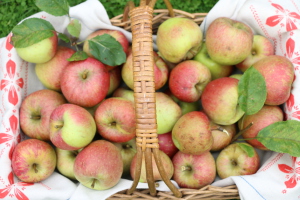 Apples are a link with the past, and I see them in my life to the end. When I find myself thinking of such things, I wish for my last breath to be taken in an orchard under a bough of apple blossom, and hope, at least, that I can conjure that image when I need it.
Apples are a link with the past, and I see them in my life to the end. When I find myself thinking of such things, I wish for my last breath to be taken in an orchard under a bough of apple blossom, and hope, at least, that I can conjure that image when I need it.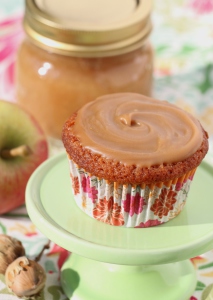
With more hope than skill, and thoughts of beginnings, not endings, I planted an espalier apple on a north-facing wall when we moved into our cottage in rural Cambridgeshire 13 years ago — the first home we had bought, and one with a garden — small, but ours, where we could at last plant something as permanent as a tree. I had chosen the variety — Dr Kidd’s Orange Red Pippin — after months of consideration and consultation. Having taken the plunge at last, I received in the mail from somewhere in Jersey (the island, not my childhood home) a slender stick, a little unpromising and with suspiciously sparse roots, but I trusted to nature (and good soil preparation).

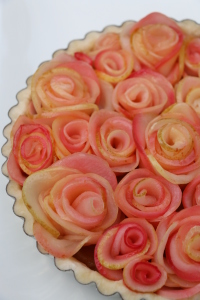 It grew!, and after a couple of years produced some beautiful blossom, which I pollinated by hand with the help of an escapee tree down the lane. I think we harvested about three apples that year, and they were juicy and crisp and very, very special. It was soon after this that I made a serious pruning error, unwittingly diverting the growing point to a lateral branch. The result over time is a crazed tangle towering over the tamer lower story, a top-heavy shock of growth like an exploding matchstick or a skinny punk with an impressive Mohawk. I didn’t have the heart to correct my error when I had the chance, as the new growth was so full of blossom, so stuck with the experiment.
It grew!, and after a couple of years produced some beautiful blossom, which I pollinated by hand with the help of an escapee tree down the lane. I think we harvested about three apples that year, and they were juicy and crisp and very, very special. It was soon after this that I made a serious pruning error, unwittingly diverting the growing point to a lateral branch. The result over time is a crazed tangle towering over the tamer lower story, a top-heavy shock of growth like an exploding matchstick or a skinny punk with an impressive Mohawk. I didn’t have the heart to correct my error when I had the chance, as the new growth was so full of blossom, so stuck with the experiment.
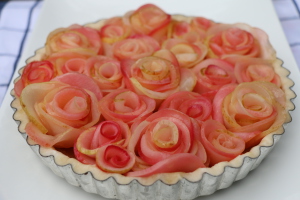 This year we had a bounteous crop from the Mohawk storey, and nothing at all from the espaliered branches. The bees had done the work for me in spring, as there was enough blossom for once to attract their interest. I harvested with some difficulty (and our tallest ladder), just before the autumn winds threatened to take the whole top-heavy arrangement down, poor thing, those Mohawk branches acting like a sail. I pruned them hard back once I’d gathered every last apple, and it looks more like a stick figure with buzz cut now.
This year we had a bounteous crop from the Mohawk storey, and nothing at all from the espaliered branches. The bees had done the work for me in spring, as there was enough blossom for once to attract their interest. I harvested with some difficulty (and our tallest ladder), just before the autumn winds threatened to take the whole top-heavy arrangement down, poor thing, those Mohawk branches acting like a sail. I pruned them hard back once I’d gathered every last apple, and it looks more like a stick figure with buzz cut now.
But I am delighted with the apples themselves — juicy, crisp and of handsome shape and colour, not too marred by weather or insects, and with a lovely tang that makes them delicious for cooking as well as eating as they are. I managed apple butter, homely pies, an elegant rose apple tart, applesauce cupcakes, and the healthier one-a-day for a few weeks now. I am grateful to have the forgiveness of Dr Kidd’s Orange Red. He is a patient fellow. And our living room smells a little of the cider place when the sun hits the fruit bowl for its one hour every afternoon — a few moments to savour.






 Tour D’Argent: a remembrance of things past at today’s prices
Tour D’Argent: a remembrance of things past at today’s prices Apricots, les abricots
Apricots, les abricots I used to cook in a piggery
I used to cook in a piggery




 Seed cake and story
Seed cake and story







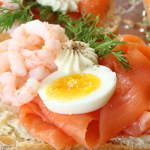



 Easter is late this year
Easter is late this year
I LOVE this! Brilliant and captivating. I’m a fan!!!
Thank you, Maggie. I’m so glad you’ve enjoyed reading.
What a wonderfully delicious blog! I love the stories and the pictures. Can’t wait for the recipes.
Thank you so much, Diane. I am working on those recipes as we speak, so it won’t be long now. Thank you for reading, and for being so encouraging and patient!
The rose apple tart looks magnificent! I’m trying to work out how it could have been made …
Thank you, Jean! The apple roses are made by slicing large-sized pieces off the whole apples, leaving the core behind (as shown in the photo with the apples on the chopping board); then these quarters are sliced thinly and lightly poached until pliable. Once cool, they can be assembled easily to resemble a rose, by overlapping them until you have the size you want. the apple ‘roses’ can then be placed in your tart shell. I had a layer of apple-butter to hold them in place, and I gave the tart some time in the oven. But you could also bake a pastry shell blind, fill it with custard or another filling, and keep the apple roses unbaked; they will be soft enough from the poaching. I will have the recipe up with step-by-step instructions soon, but hope this answers your question in the meantime. Thanks for your kind comment!